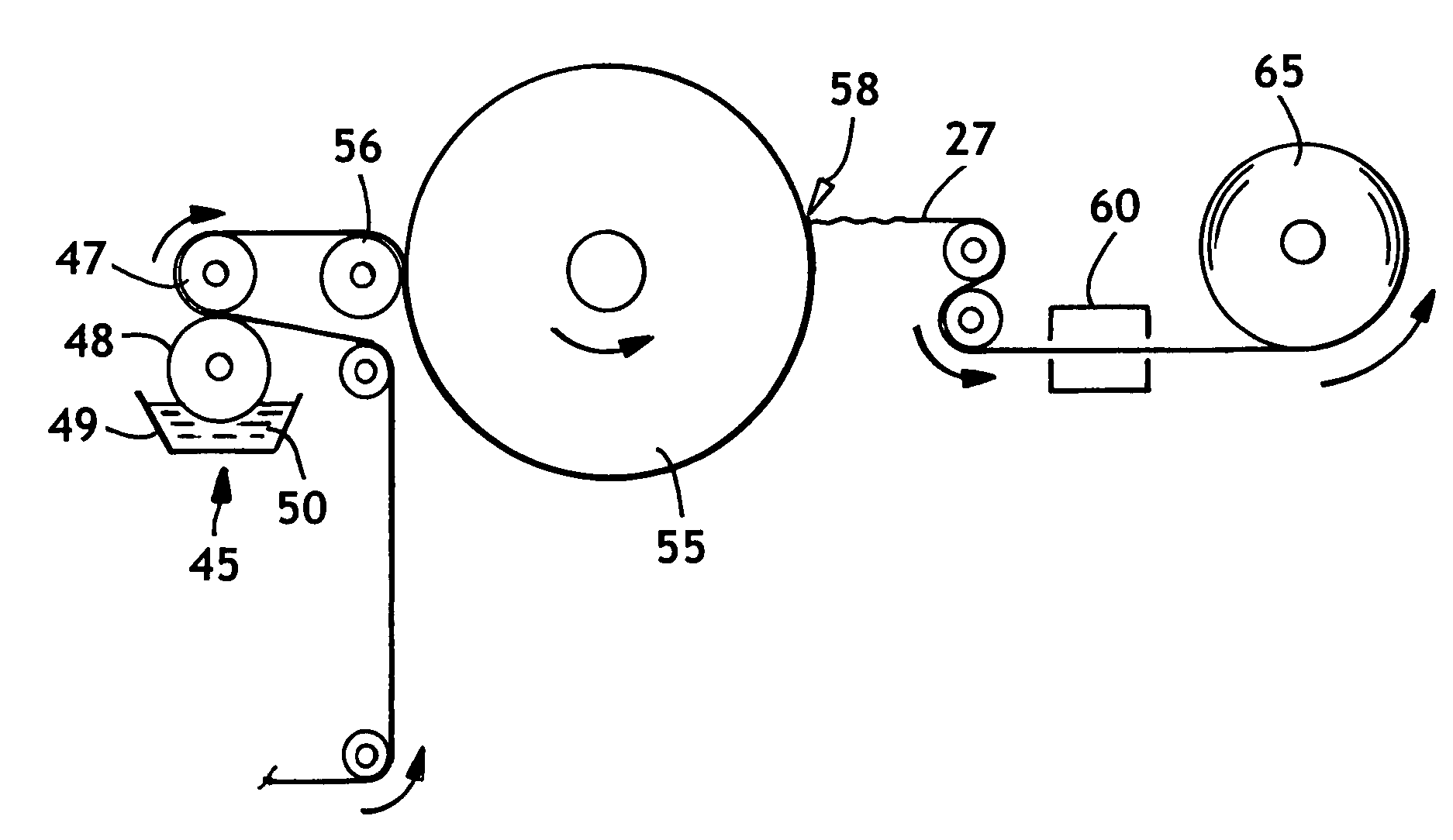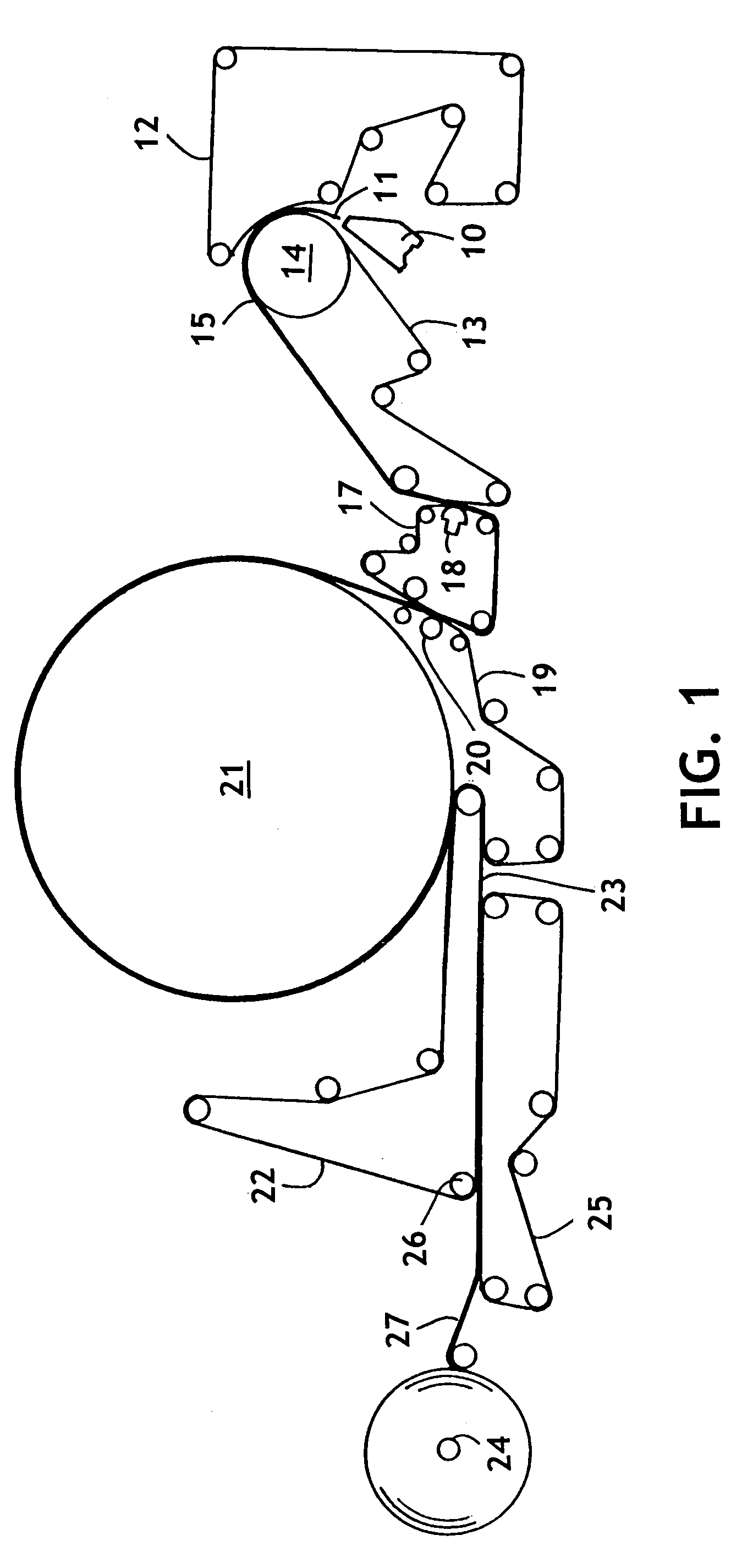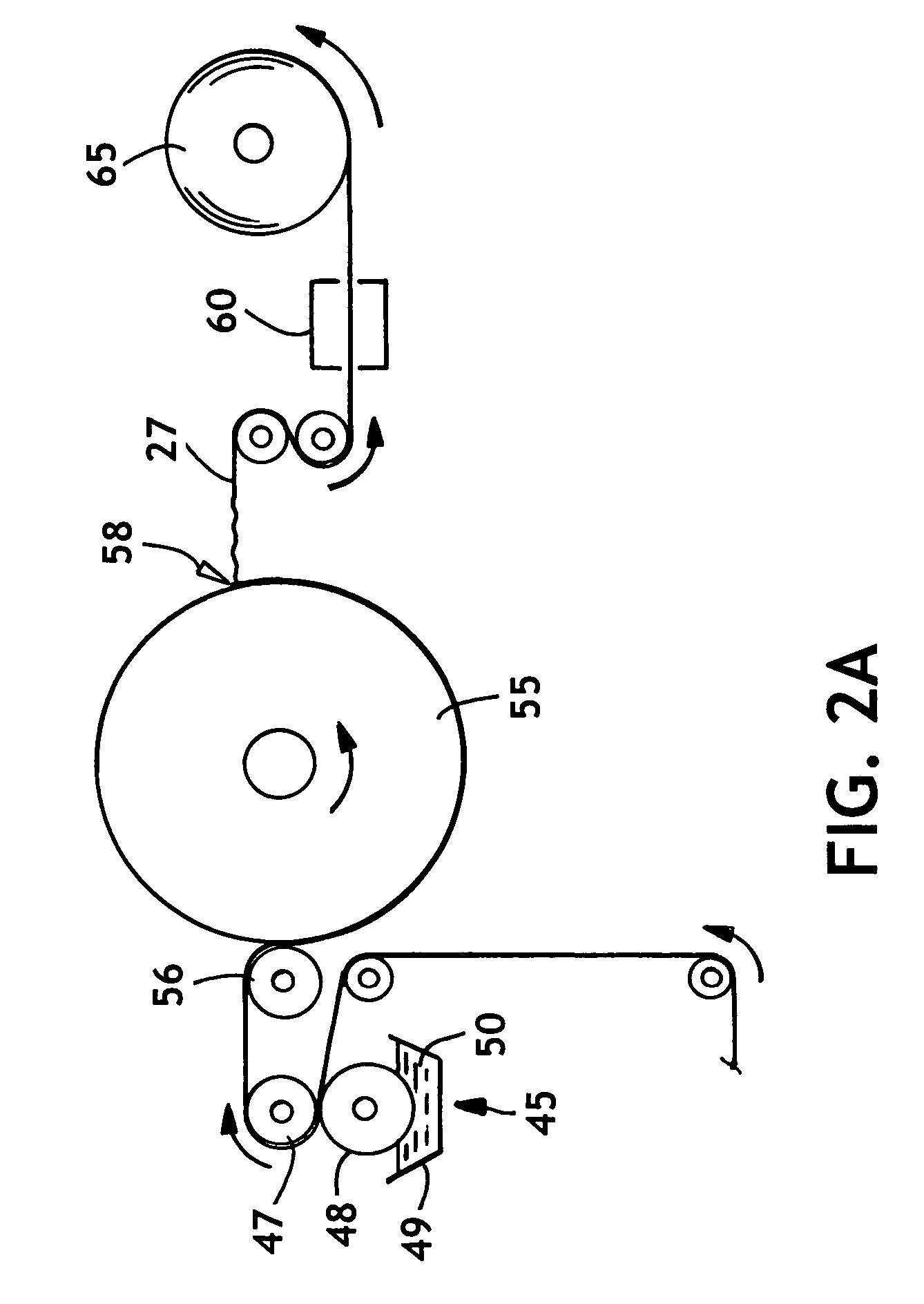Flexible multi-ply tissue products
a multi-ply, tissue technology, applied in the direction of non-fibrous pulp addition, transportation and packaging, papermaking, etc., can solve the problems of not increasing the lint and slough of tissue products, and achieve the effect of improving strength, improving balance of strength, and acceptable softness
- Summary
- Abstract
- Description
- Claims
- Application Information
AI Technical Summary
Benefits of technology
Problems solved by technology
Method used
Image
Examples
example 1
Uncreped Throughdried Basesheet
[0067]A pilot tissue machine was used to produce a layered, uncreped throughdried tissue basesheet generally as described in FIG. 1. More specifically, the basesheet was made from a stratified fiber furnish containing a center layer of fibers positioned between two outer layers of fibers. The pulp mixture consisted of eucalyptus and northern softwood kraft (LL-19) fibers. Both outer layers of the basesheet contained 100% eucalyptus fibers and the inner layer contained 100% softwood fibers. The two outer layers comprised 48 and 20 weight percent, respectively, of the total weight of the sheet. The inner layer comprised 32 weight percent of the sheet.
[0068]The machine-chest furnish containing the fibers was diluted to approximately 0.2 percent consistency and delivered to a layered headbox. The forming fabric speed was approximately 1265 feet per minute (fpm) (386 meters per minute). The basesheet was then rush transferred to a transfer fabric (Voith Fab...
example 2
Control
[0069]Basesheet from Example 1 was converted into a two-ply facial tissue product by unrolling the basesheet from the parent roll, calendering the basesheet with a calender nip pressure of about 15 pounds per square inch in order to generate a target caliper of about 300 microns for the final product, trimming down the basesheet to a width of 21.5 cm, crimping two basesheet plies together, C-folding and cutting the crimped plies in a conventional manner to produce a two-ply facial tissue product.
example 3a
Invention
[0070]The basesheet of Example 1 was fed to a gravure printing line and treated as shown in FIG. 2A where a cross-linking latex flexible polymeric binder material was printed onto one outer surface of the sheet using direct rotogravure printing. The flexible polymeric binder material in this example was a vinyl acetate ethylene copolymer, Airflex® EN1165, which was obtained from Air Products and Chemicals, Inc. of Allentown, Pa. The flexible polymeric binder material formulation contained the following ingredients:
[0071]
1. Airflex ® EN1165 (52% solids)10,500g2. Defoamer (Nalco 94PA093)50g3. Water3,400g4. Catalyst (10% Citric Acid)540g5. Thickener (2% Natrosol 250MR, Hercules)600g
[0072]The sheet was printed with a flexible polymeric binder material in a 40 mesh pattern as shown in FIG. 4 with the following specifications:
[0073]Cell length: 0.020 inch;
[0074]Cell width: 0.0055 inch;
[0075]Tip length: 0.0055 inch (each triangle tip height is 0.00275 inch; tip length is two times...
PUM
| Property | Measurement | Unit |
|---|---|---|
| width | aaaaa | aaaaa |
| glass transition temperature | aaaaa | aaaaa |
| glass transition temperature | aaaaa | aaaaa |
Abstract
Description
Claims
Application Information
 Login to View More
Login to View More - R&D
- Intellectual Property
- Life Sciences
- Materials
- Tech Scout
- Unparalleled Data Quality
- Higher Quality Content
- 60% Fewer Hallucinations
Browse by: Latest US Patents, China's latest patents, Technical Efficacy Thesaurus, Application Domain, Technology Topic, Popular Technical Reports.
© 2025 PatSnap. All rights reserved.Legal|Privacy policy|Modern Slavery Act Transparency Statement|Sitemap|About US| Contact US: help@patsnap.com



